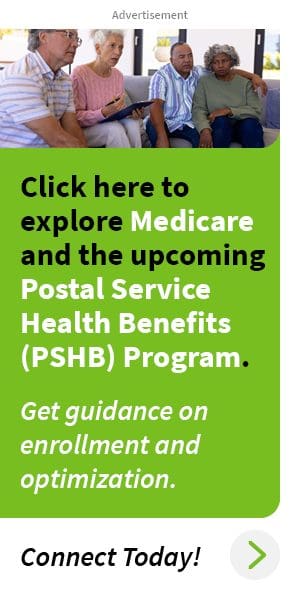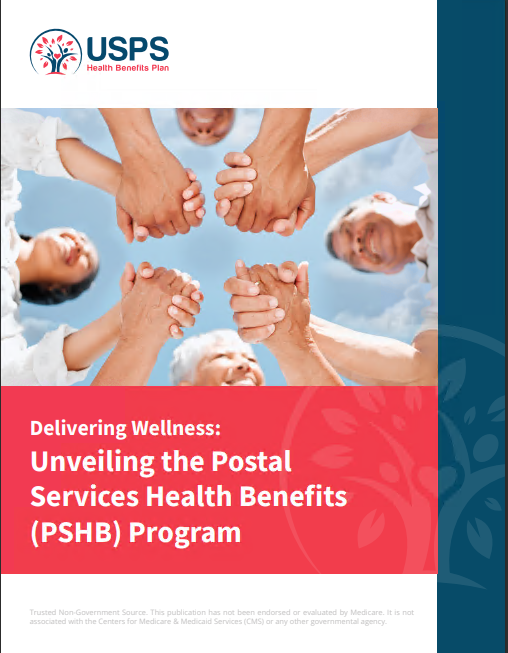Key Takeaways
-
The Federal Employees Health Benefits (FEHB) Program has been replaced by the Postal Service Health Benefits (PSHB) Program for postal employees and retirees as of 2025. While many aspects remain familiar, key differences could impact your healthcare choices.
-
If you are a Medicare-eligible postal retiree, enrolling in Medicare Part B is now a requirement to maintain PSHB coverage, with certain exemptions applying to those who retired before January 1, 2025.
Understanding the Transition from FEHB to PSHB
As of January 1, 2025, the Postal Service Health Benefits (PSHB) Program officially replaced the Federal Employees Health Benefits (FEHB) Program for postal employees, retirees, and eligible family members. This transition brings several notable changes that may affect your coverage, costs, and plan options. If you’re currently enrolled or planning for retirement, understanding these differences is essential to making the right healthcare choices.
Who Needs to Enroll in PSHB?
-
Current Postal Employees: If you are an active postal worker, you must select a PSHB plan during Open Season or following a qualifying life event.
-
Postal Retirees: If you retired before January 1, 2025, you have the option to stay on PSHB without enrolling in Medicare Part B.
-
Medicare-Eligible Retirees (Post-2025): If you retire on or after January 1, 2025, you must enroll in Medicare Part B to remain eligible for PSHB coverage.
-
Family Members: Spouses and dependents who qualify under FEHB guidelines remain eligible under PSHB.
What Stays the Same with PSHB?
Not everything is changing—many aspects of your health benefits will continue as they did under FEHB:
-
Comprehensive Coverage: PSHB still offers coverage for hospital stays, doctor visits, prescription drugs, preventive care, and specialty services.
-
Choice of Plans: While some plans have changed, you still have multiple PSHB options to choose from.
-
Government Contributions: The federal government continues to pay a portion of your premium, helping offset the cost of coverage.
-
Open Season Enrollment: You still have an annual window, generally from November to December, to review and update your plan.
The Biggest Differences Between FEHB and PSHB
1. Medicare Part B Enrollment Requirement for Retirees
If you retire after January 1, 2025, and are eligible for Medicare, you are required to enroll in Medicare Part B to maintain PSHB coverage. This means paying a monthly Part B premium, but many PSHB plans offer cost-saving incentives, such as lower deductibles and copayments for those enrolled in both PSHB and Medicare. While this might seem like an additional expense, it can significantly reduce your out-of-pocket costs for medical services, hospital stays, and other healthcare expenses.
2. Prescription Drug Coverage Through Medicare Part D
Retirees and their eligible family members who are enrolled in Medicare will automatically receive their prescription drug coverage through a Medicare Part D Employer Group Waiver Plan (EGWP). This structure ensures that retirees with Medicare can access the benefits of a Part D plan without needing to enroll separately. However, it’s important to understand how this affects your current prescriptions and whether your medications are covered under your selected PSHB plan.
3. Premium Costs and Contributions
-
Government Contributions: The government will continue to cover approximately 70% of your PSHB premium, similar to FEHB.
-
Potential Cost Adjustments: While many plans offer comparable pricing, you may see changes in premium amounts, out-of-pocket costs, or cost-sharing structures, depending on the plan you select.
-
Plan-Specific Costs: Some plans may have higher premiums, while others offer lower monthly costs but higher deductibles and copayments. It’s essential to review all available options carefully.
4. Changes in Available Plan Options
Some FEHB plans are no longer offered under PSHB, while others have been adjusted to meet the new program’s guidelines. If your previous plan has been discontinued, you will need to select a new PSHB plan. Additionally, some new plan options may provide better benefits for Medicare enrollees, while others may be more beneficial for younger postal employees who are not yet eligible for Medicare.
5. Open Season and Enrollment Changes
You must enroll in PSHB during the annual Open Season, typically held from November to December. Outside of Open Season, changes to your plan are only allowed due to qualifying life events (e.g., marriage, divorce, birth of a child, or loss of other coverage). Missing this window could result in lapses in coverage or higher costs if you need to make adjustments later.
6. Coordination of Benefits with Medicare
If you are both a PSHB enrollee and a Medicare beneficiary, your benefits will be coordinated between the two programs. This can lead to lower out-of-pocket costs, as Medicare will be your primary payer, and PSHB will serve as secondary coverage, reducing copays and deductibles. This coordination is beneficial for those who anticipate needing frequent medical care, hospital stays, or specialized treatments.
7. Additional Benefits and Coverage Enhancements
-
Some PSHB plans may offer additional wellness programs, telehealth services, or expanded mental health coverage.
-
Preventive care remains a key focus, with many screenings, vaccinations, and routine checkups fully covered.
-
Some plans may provide enhanced dental and vision benefits, particularly for retirees enrolled in Medicare.
What You Need to Do Next
If You’re a Current Postal Employee
-
Review your PSHB plan options during Open Season.
-
Compare coverage details, costs, and provider networks to find a plan that fits your needs.
-
If you plan to retire soon, consider how enrolling in Medicare Part B will impact your healthcare costs.
-
Stay informed about any further adjustments or updates to PSHB to ensure you make the best decision for your healthcare needs.
If You’re a Postal Retiree
-
If you retired before January 1, 2025, you are not required to enroll in Medicare Part B to keep your PSHB plan.
-
If you retire after January 1, 2025, enroll in Medicare Part B to maintain PSHB eligibility.
-
Check how your plan coordinates benefits with Medicare to reduce out-of-pocket costs.
-
Keep track of Open Season dates to ensure your plan continues to meet your healthcare needs.
If You’re a Medicare-Eligible Retiree
-
Enroll in Medicare Part B to ensure continued PSHB coverage.
-
Take advantage of Medicare Part D’s automatic prescription drug coverage through PSHB.
-
Review PSHB plan options to maximize cost savings and benefits.
-
Consider additional supplemental coverage if needed to fill any gaps in benefits.
Staying Informed and Planning Ahead
Understanding these changes is essential for making the right healthcare choices. With new enrollment rules and different plan structures, planning ahead can help you avoid unexpected costs and ensure uninterrupted coverage. If you need help selecting the right PSHB plan or understanding Medicare enrollment, speak with a licensed agent listed on this website for professional advice.









